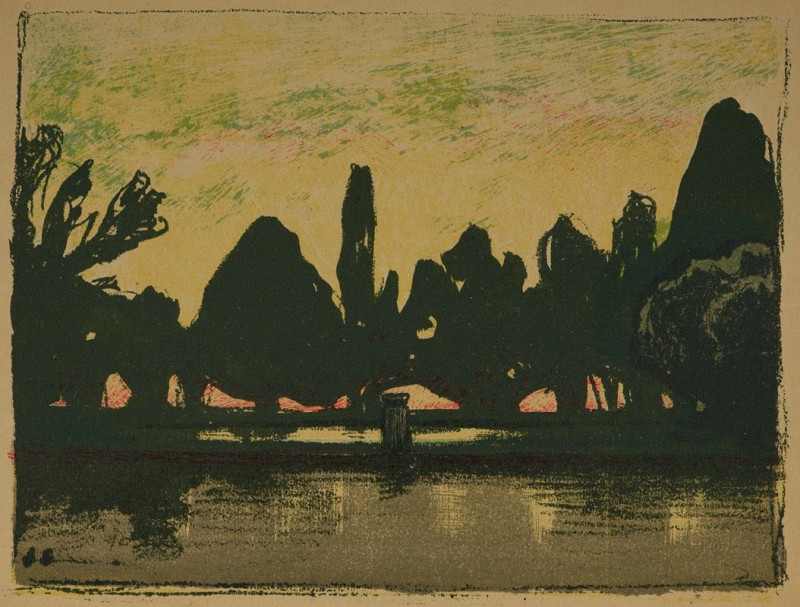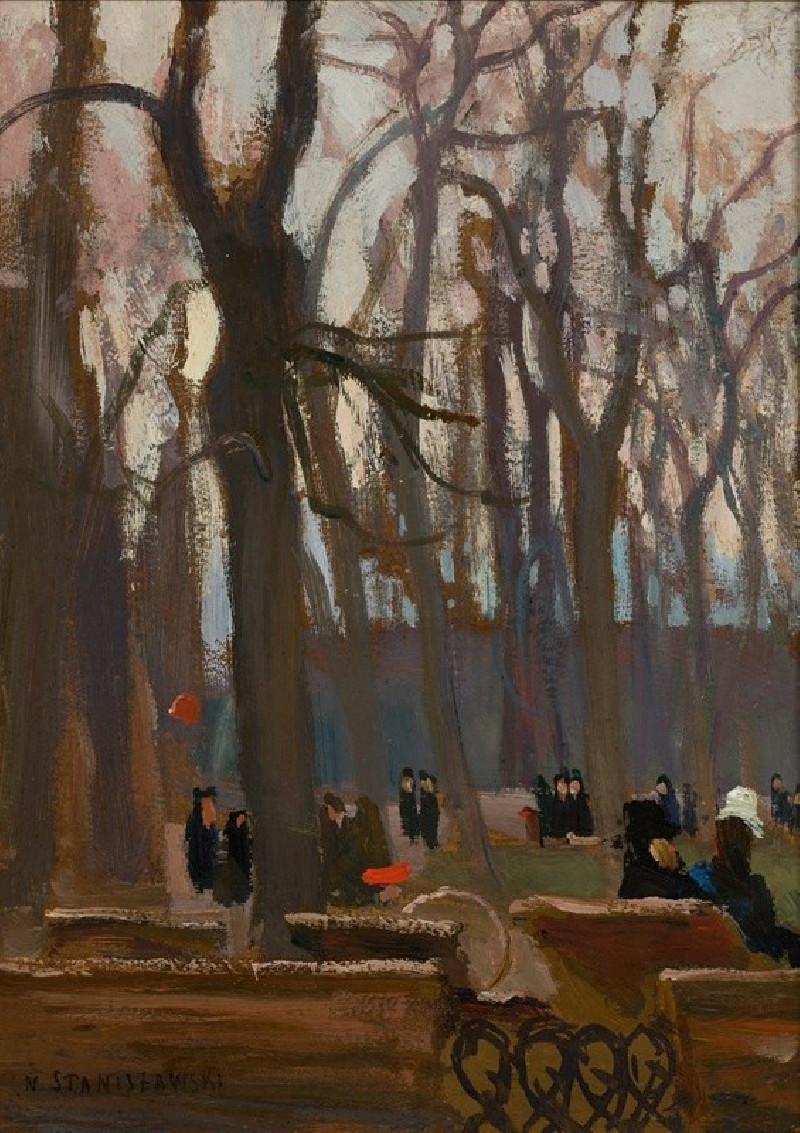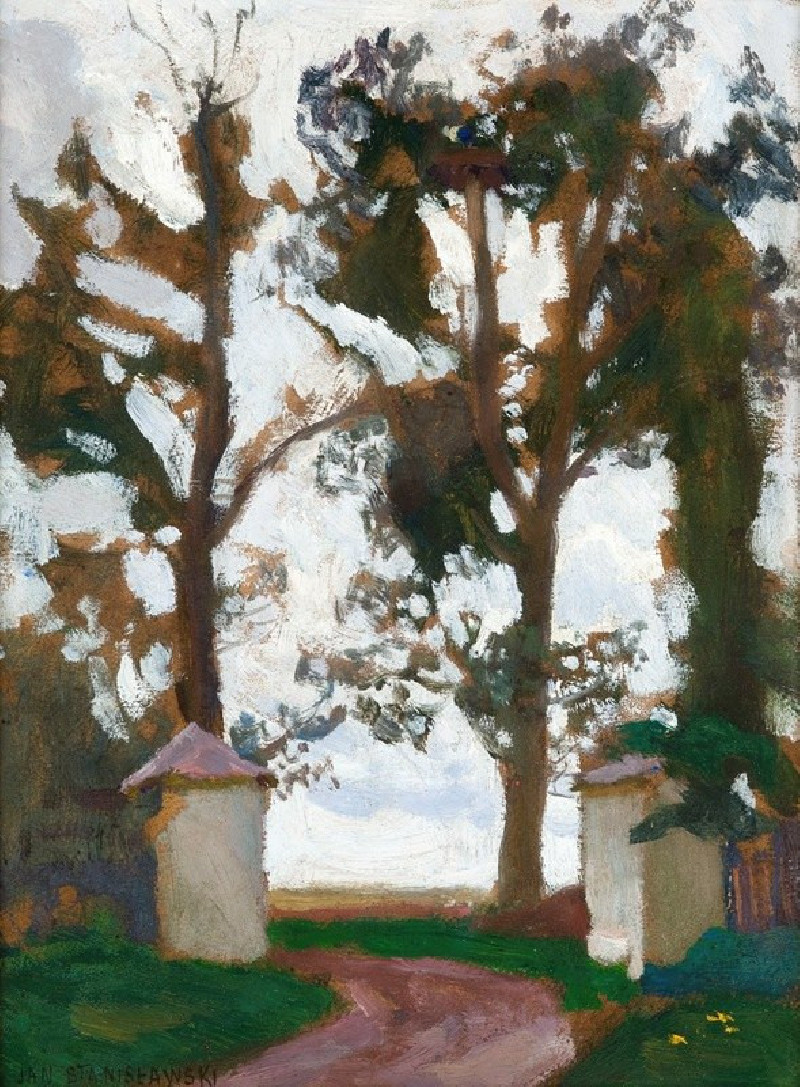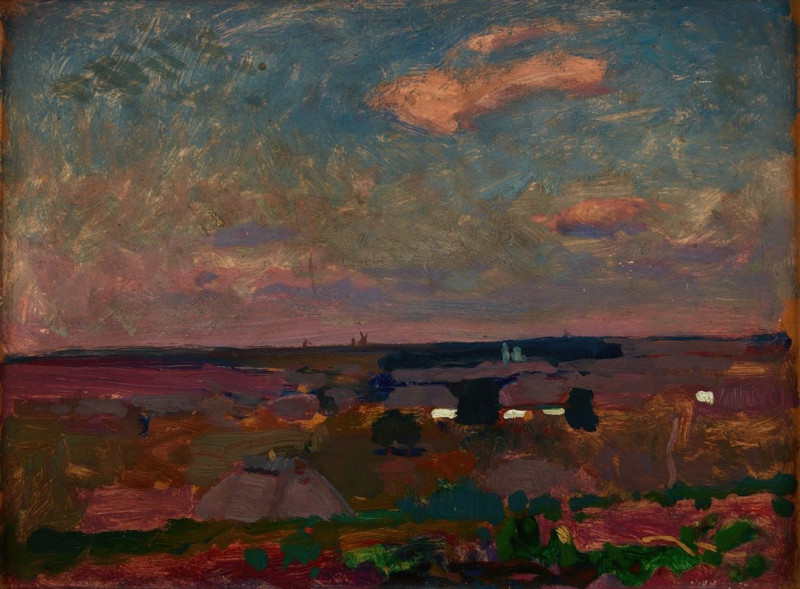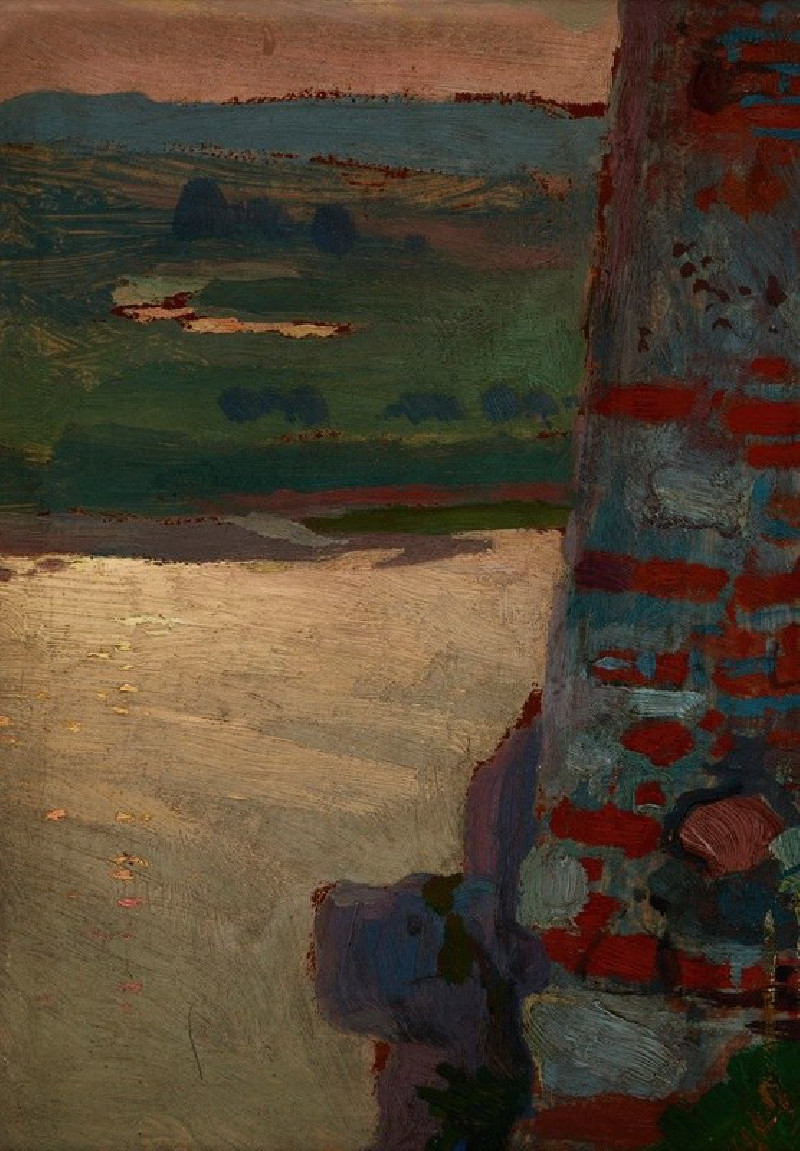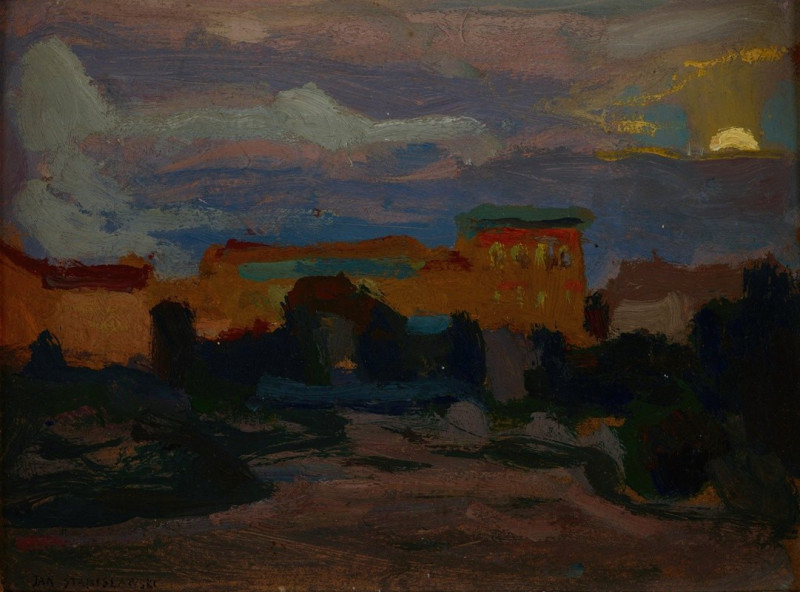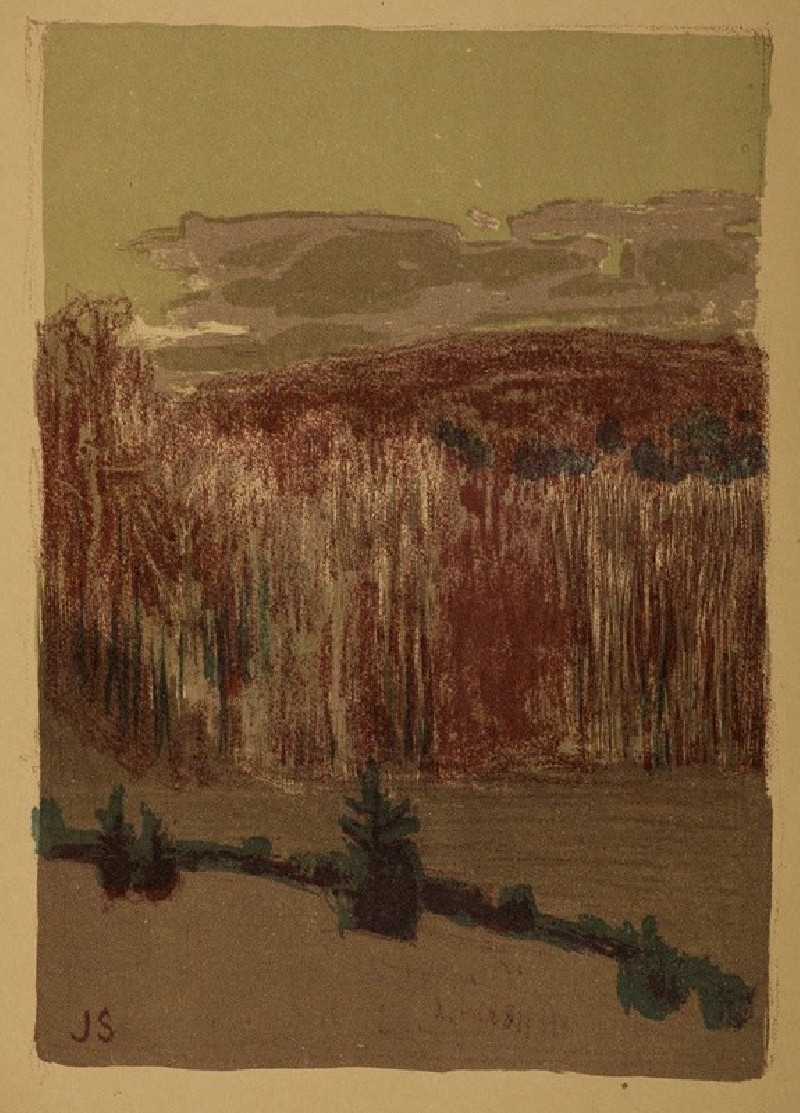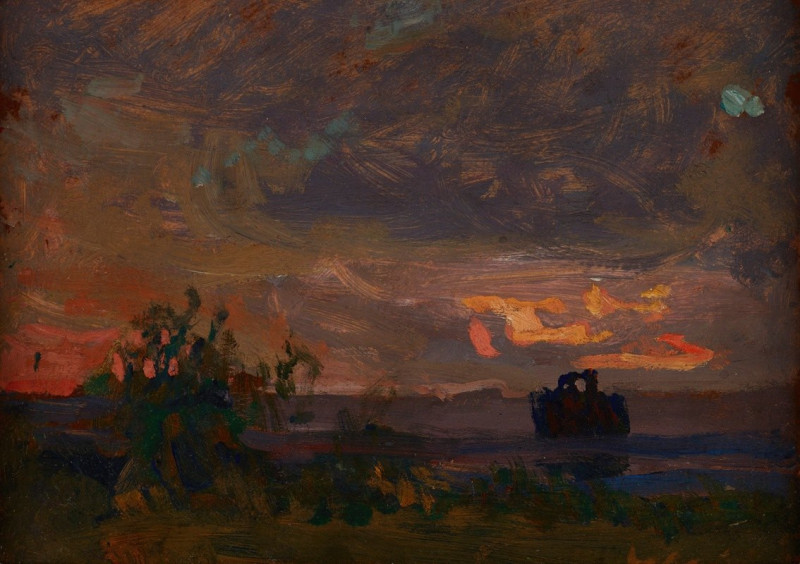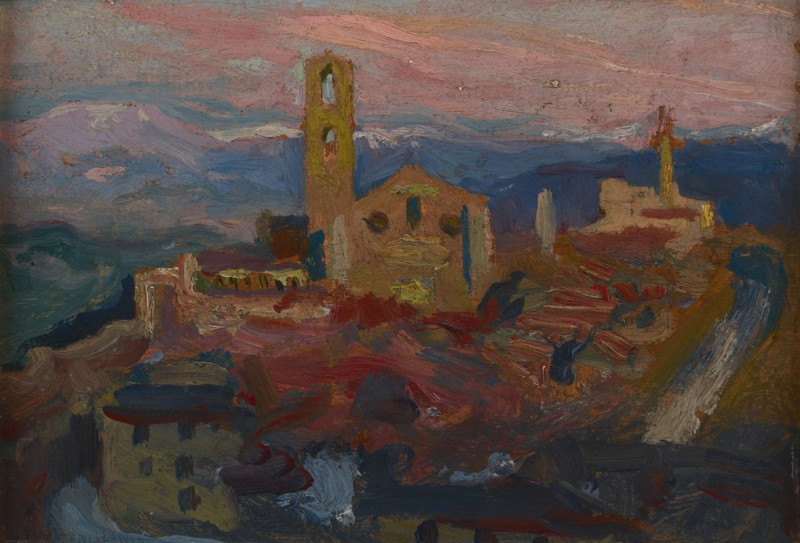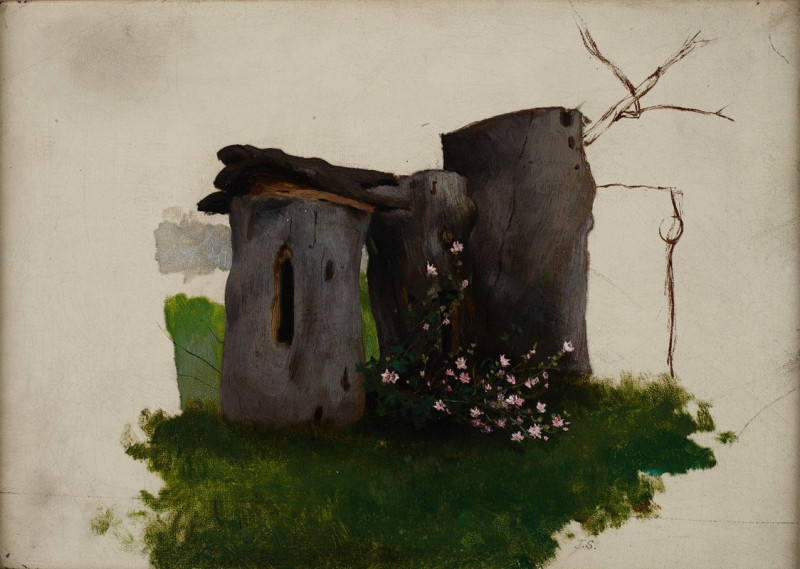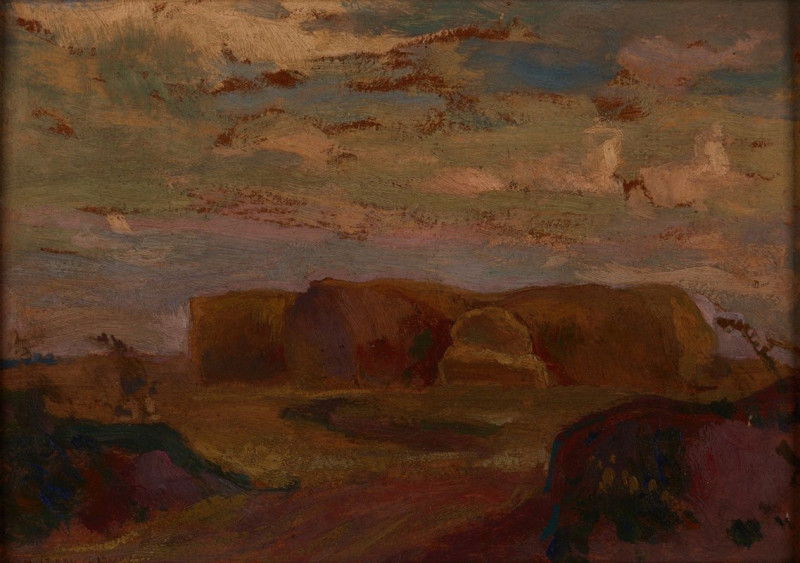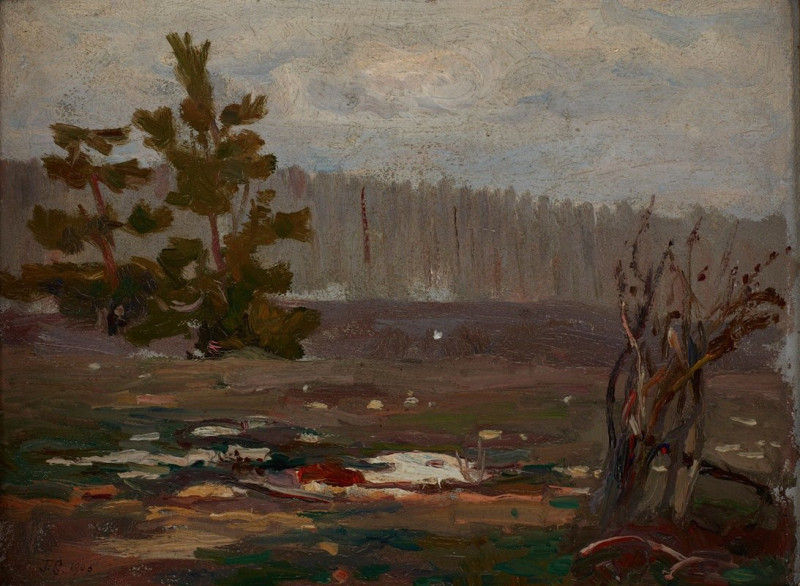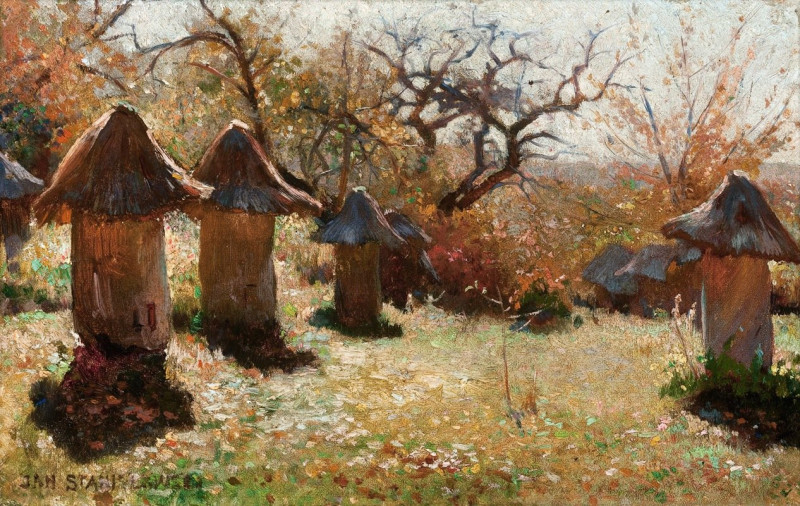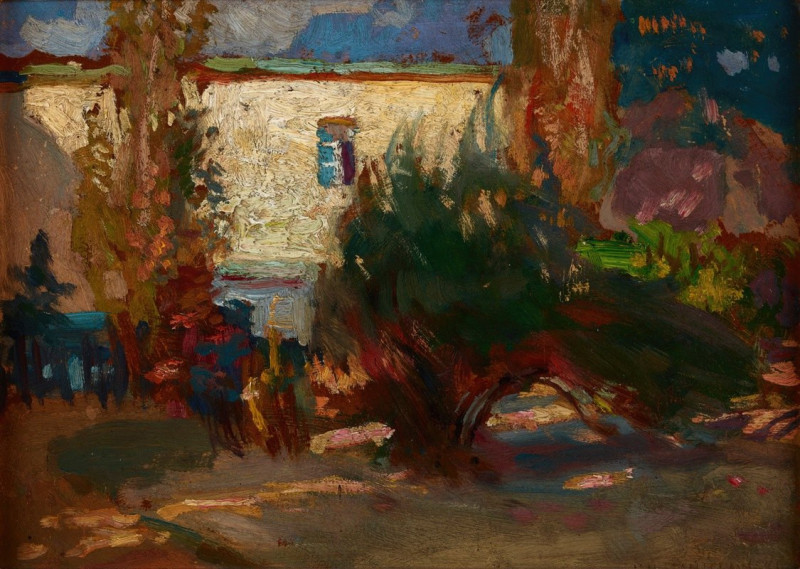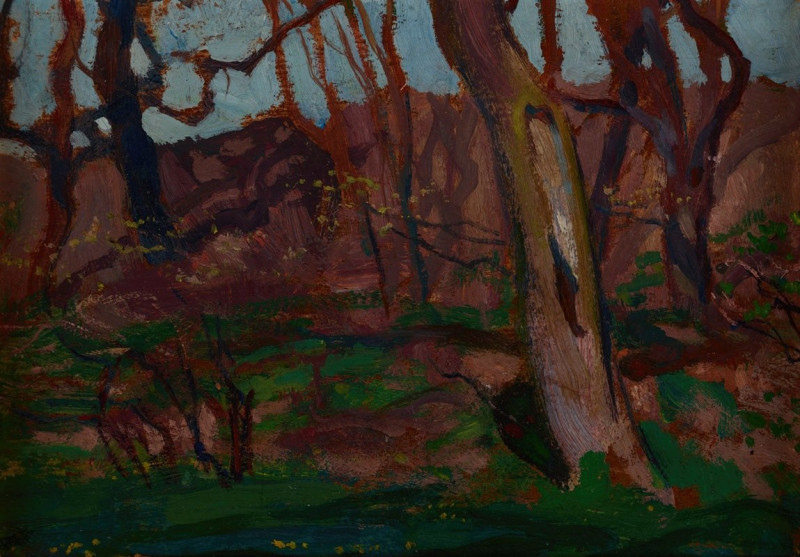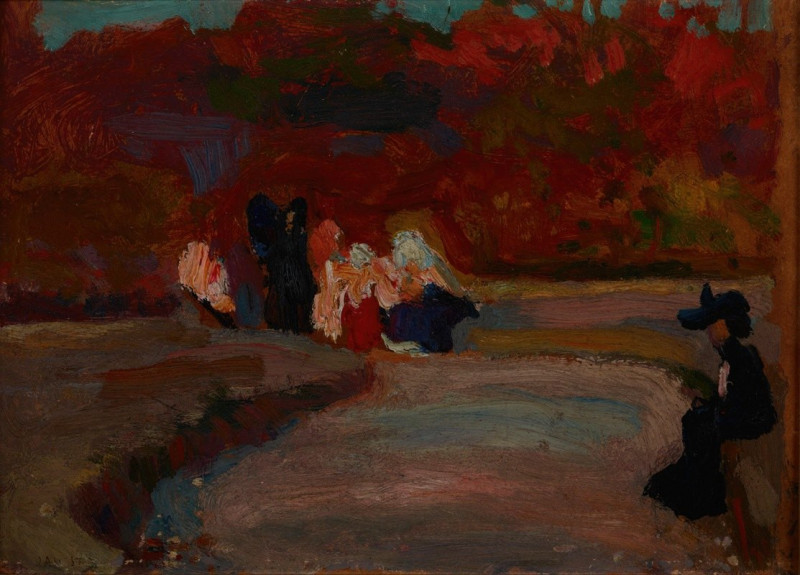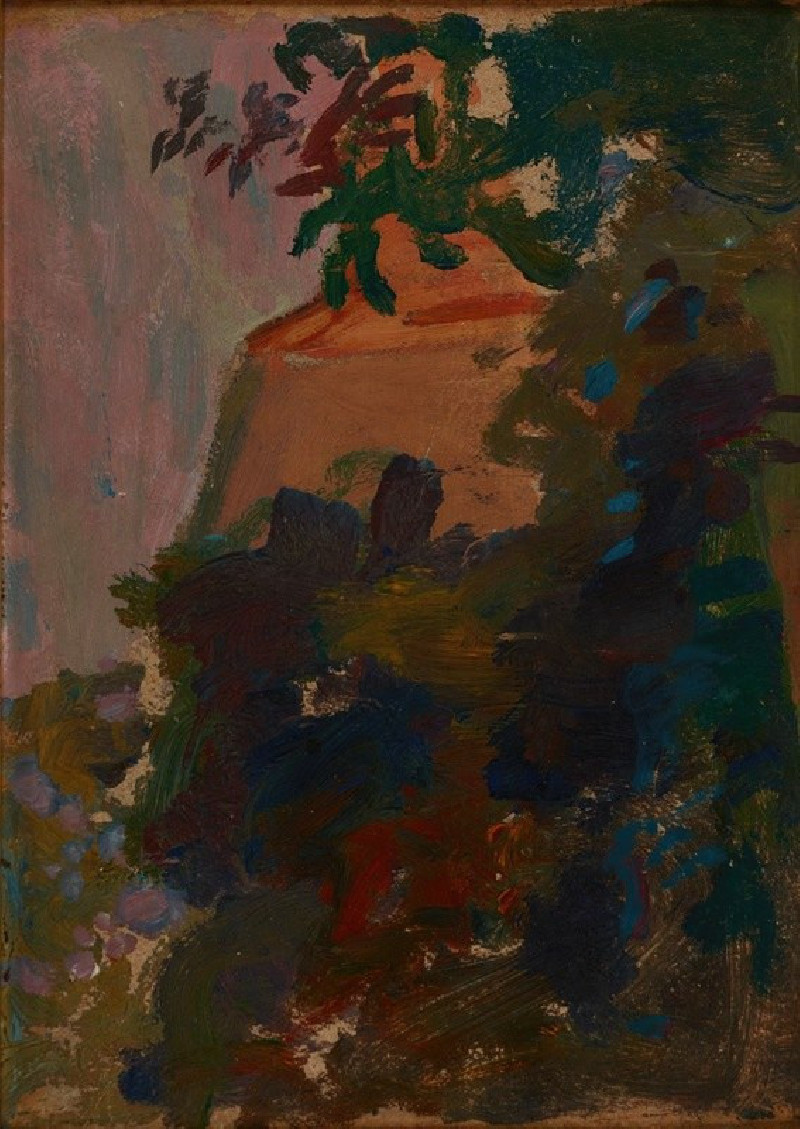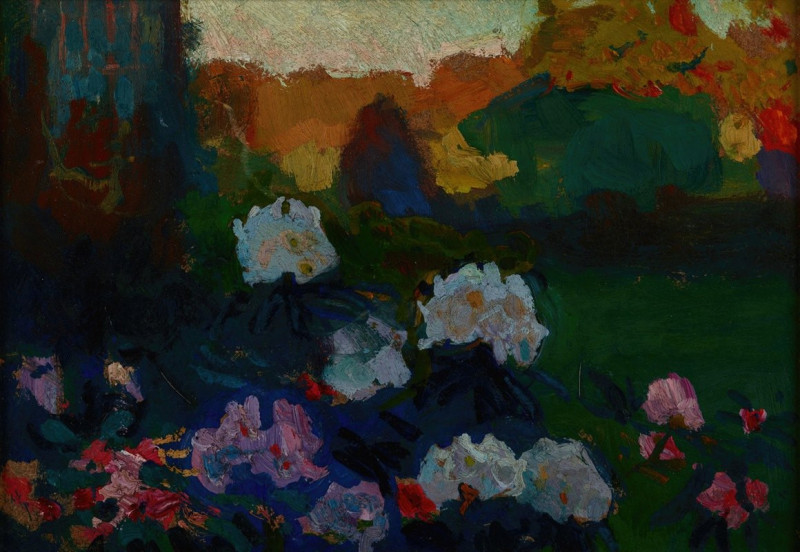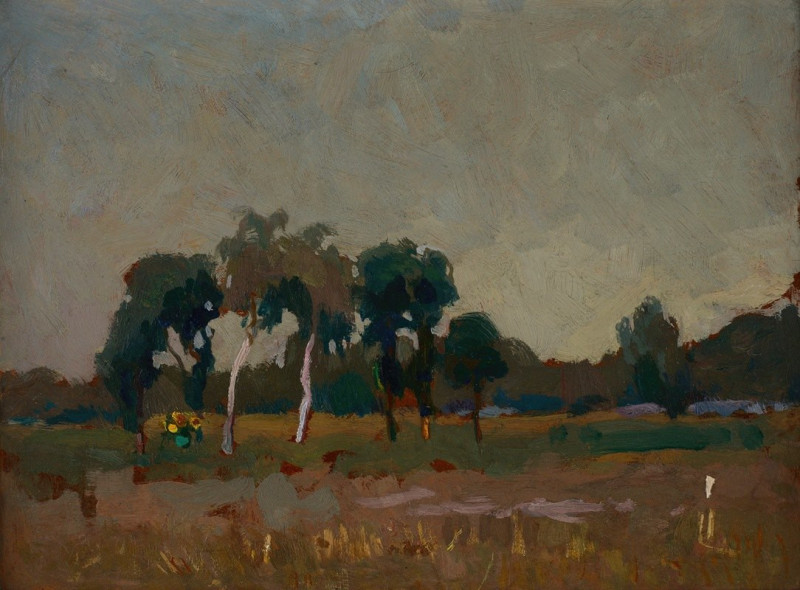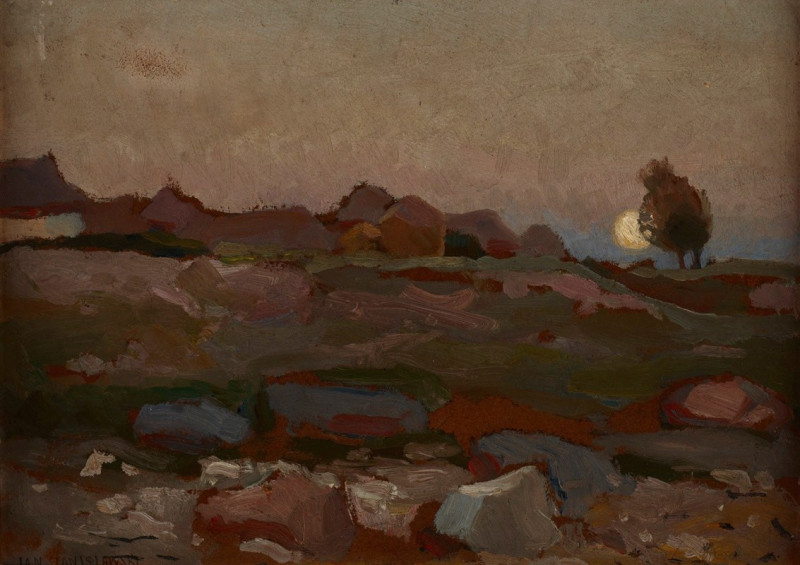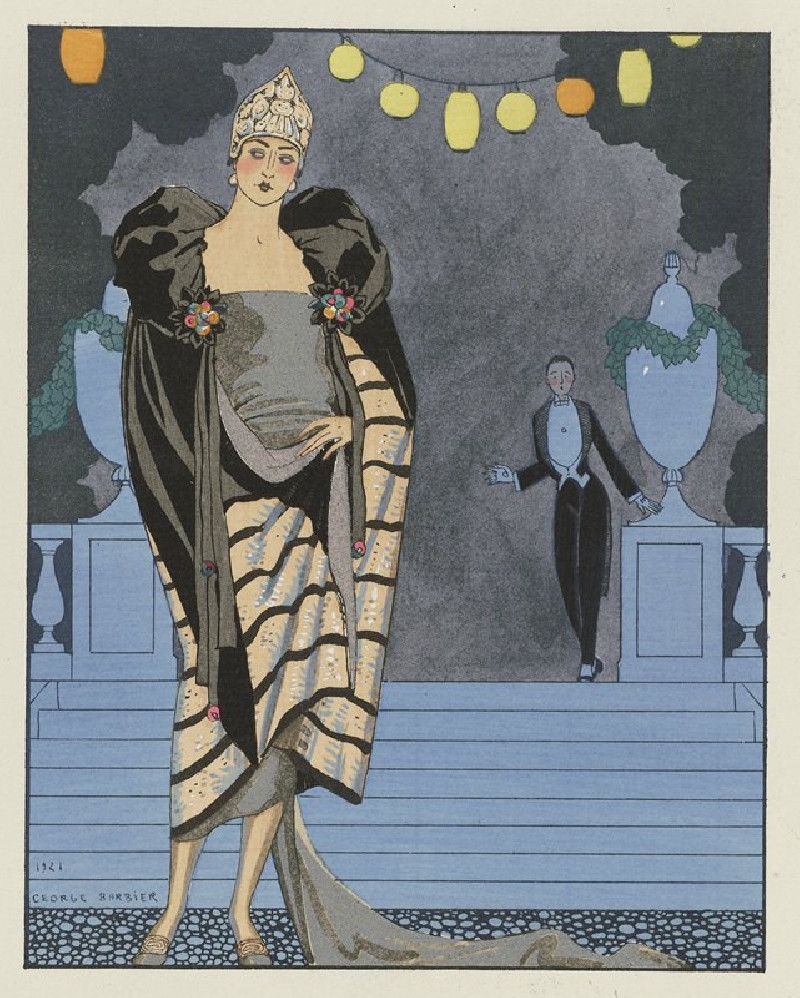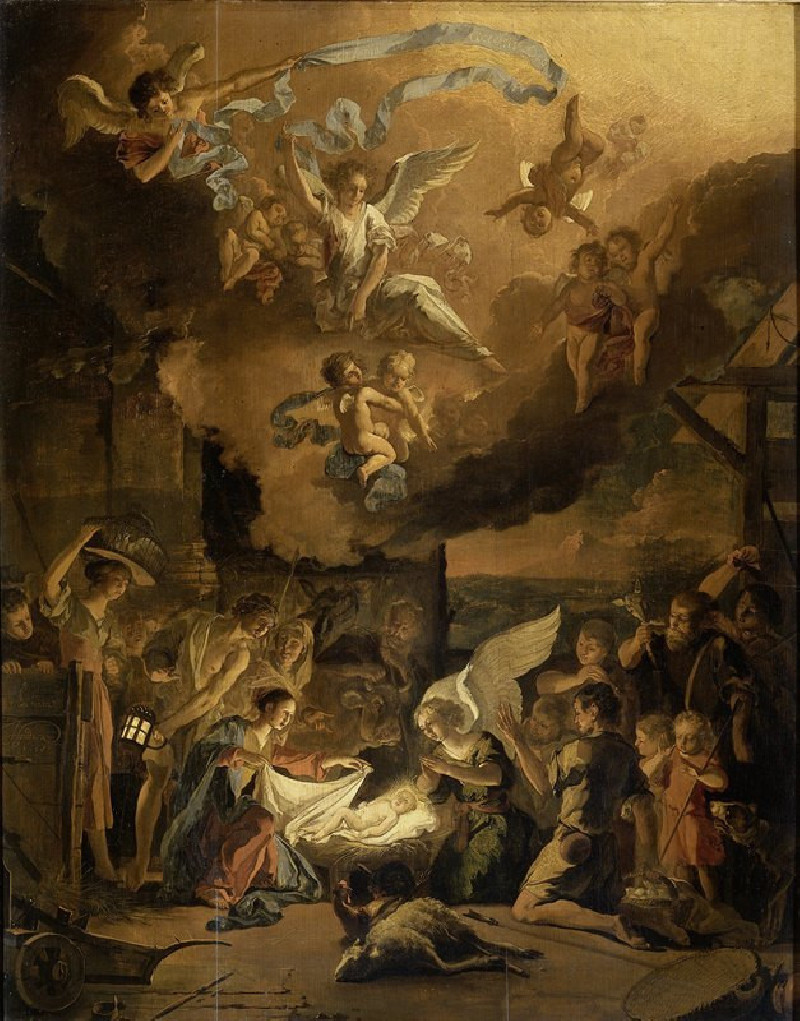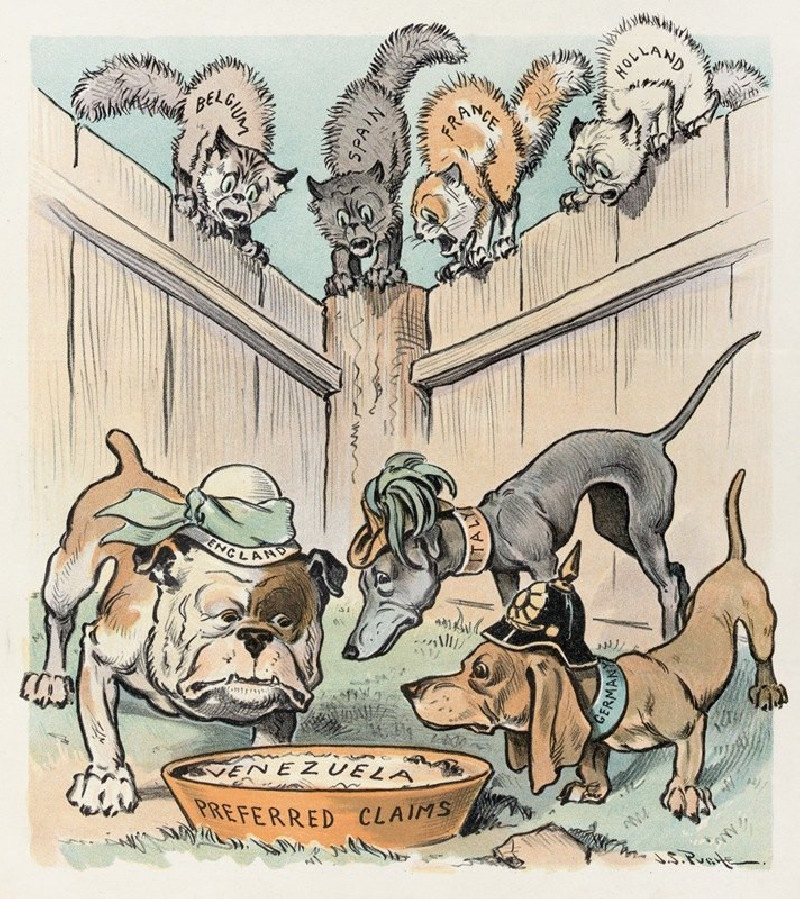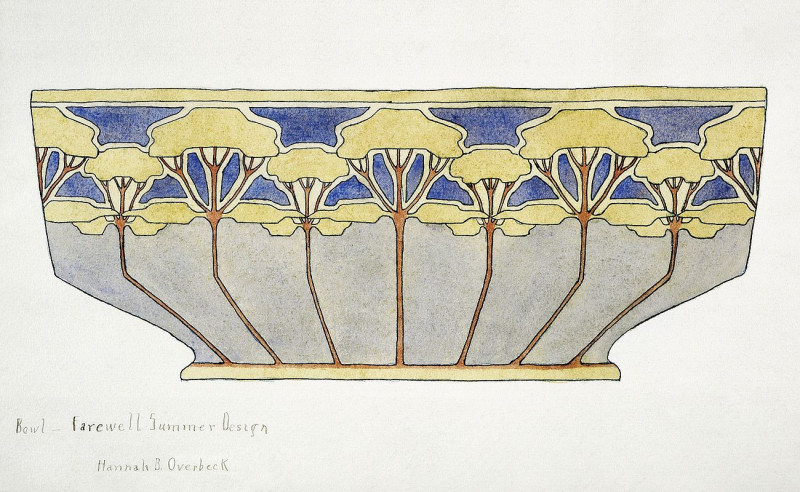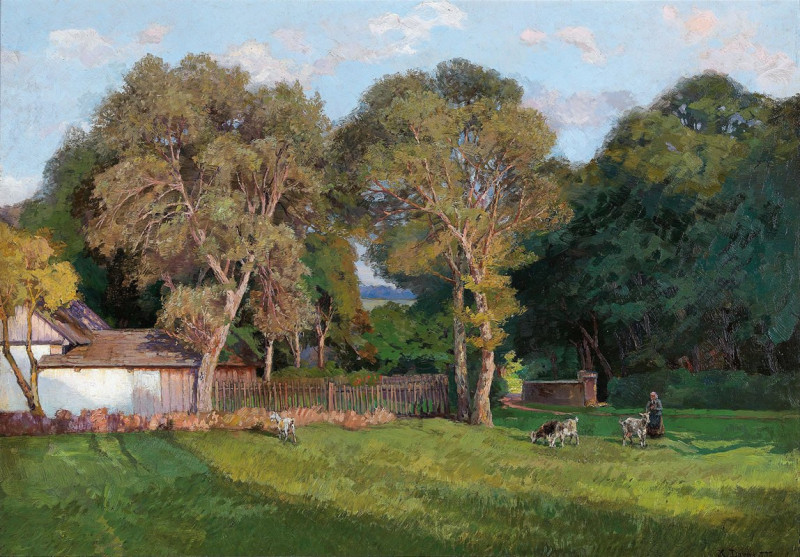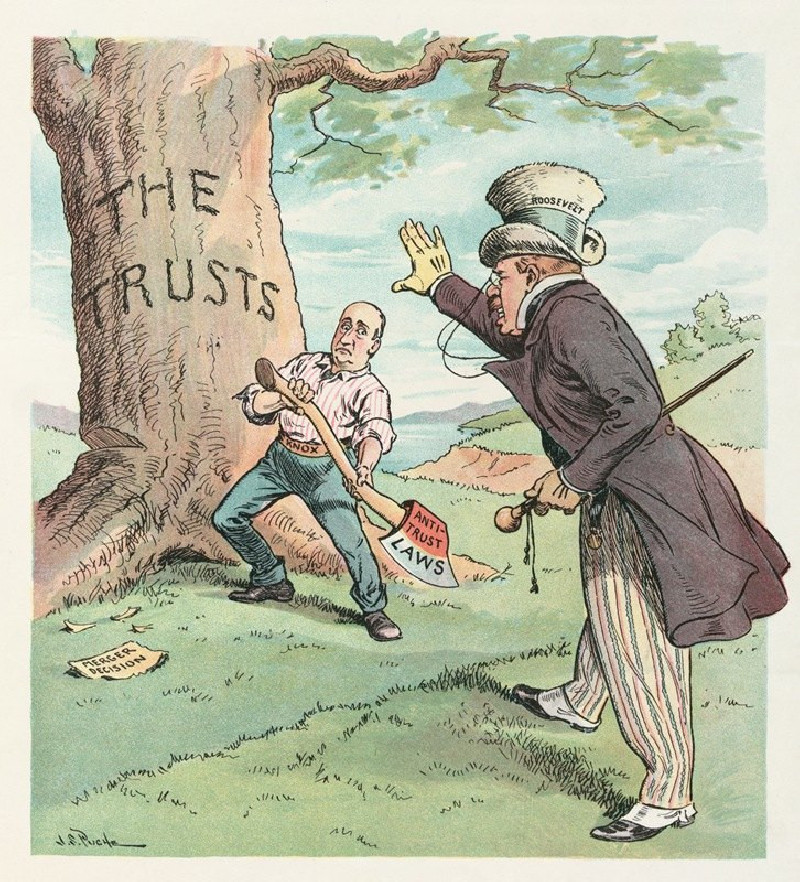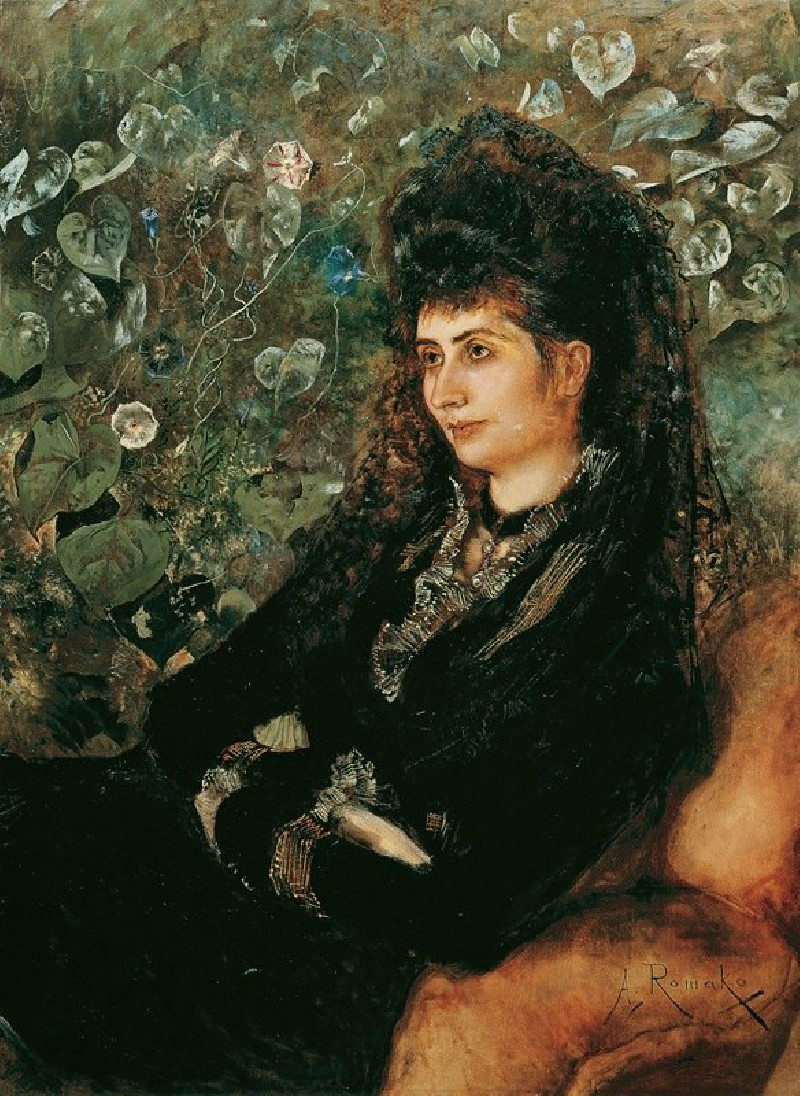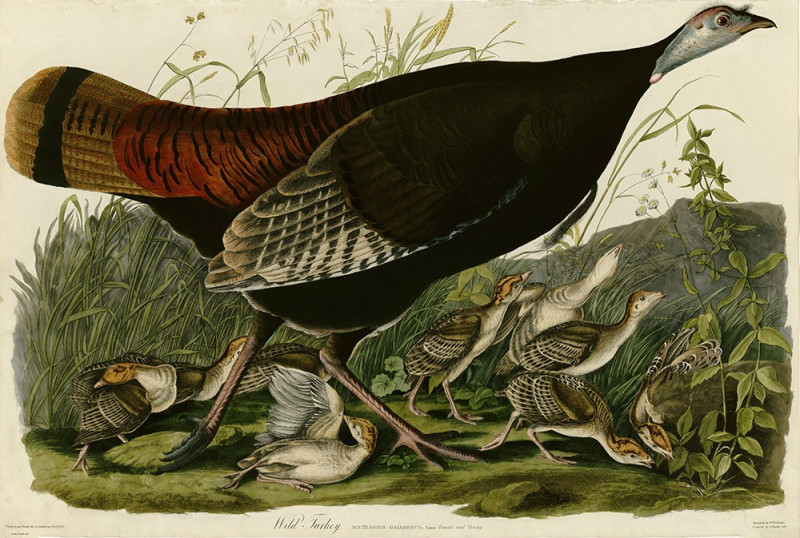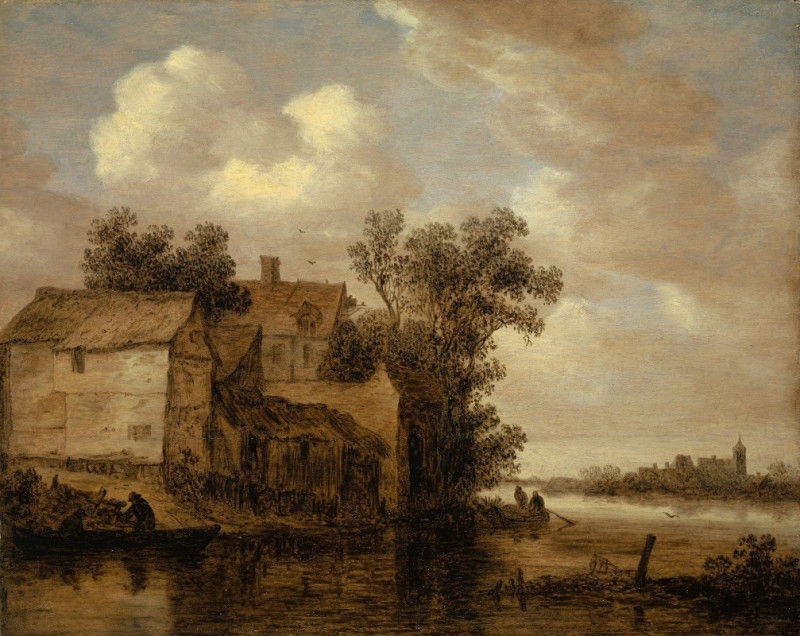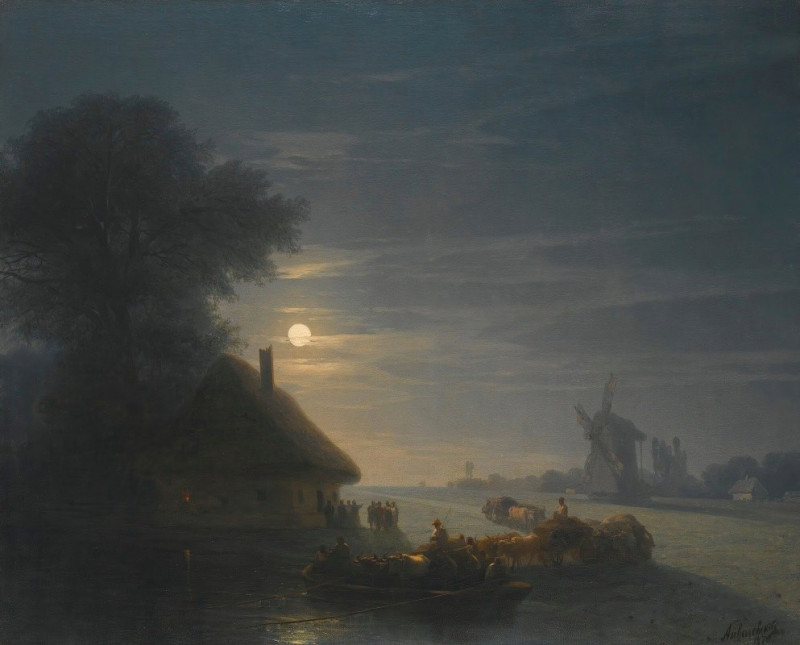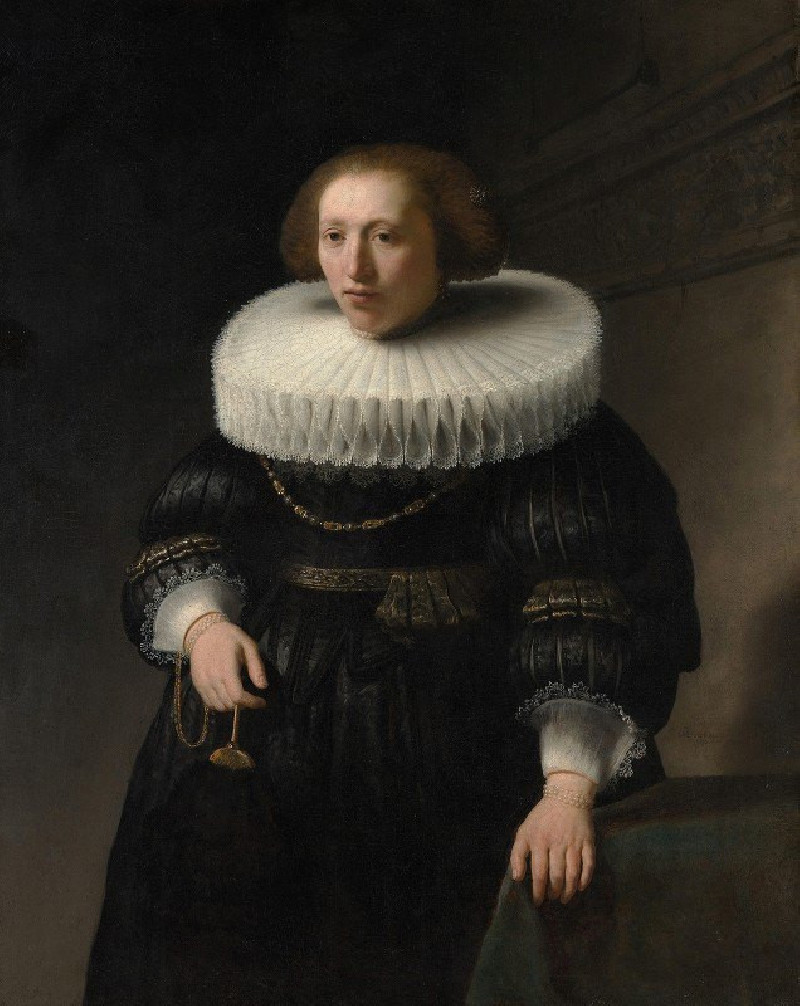Field at Białocerkiew (Bila Tserkva) (1890)
Technique: Giclée quality print
Recommended by our customers
More about this artwork
"Field at Białocerkiew (Bila Tserkva) (1890)" by Jan Stanisławski is a striking example of the artist's mastery in capturing the serene and understated beauty of rural landscapes. This painting features an expansive field under a vast, cloud-filled sky. The foreground is dominated by warm tones of browns and ochres, depicting the ripened grains swaying gently in the breeze. As the viewer's eye moves towards the horizon, these warm earth tones gradually give way to cooler hues, suggesting a distant tree line or settlement under the wide, enveloping sky.Stanisławski's brushwork is textured and expressive, contributing to a dynamic surface that vibrates with the subtle movements of nature. He adeptly balances the composition with a minimalistic approach, where less is indeed more. There is a subtlety in the transition between the land and sky, making the viewer feel as if they are standing within the painting, surrounded by the tranquil expanse.This piece captures an essence that is both timeless and ephemeral, reflecting the artist’s profound connection to the landscapes of Eastern Europe.



